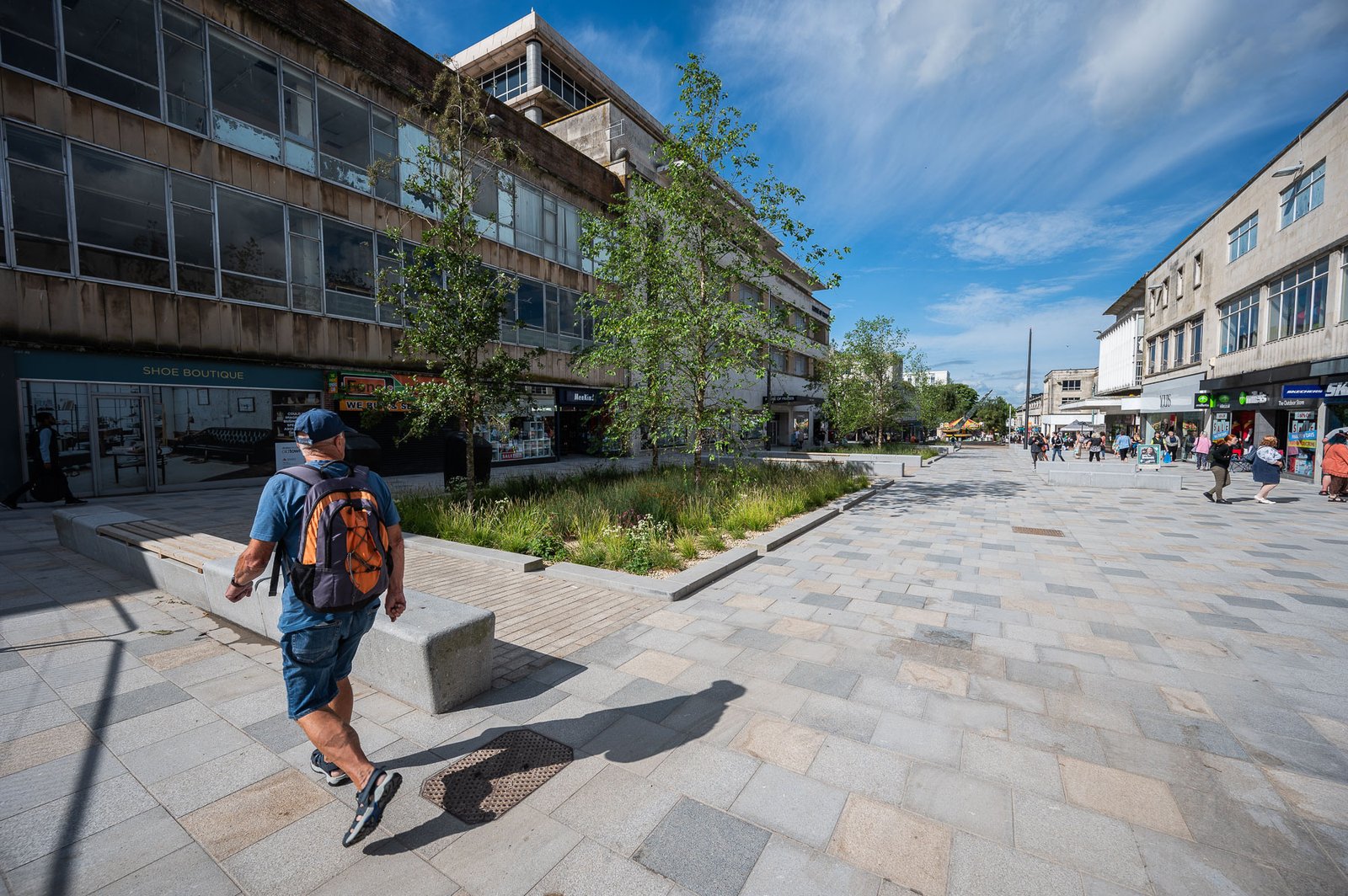The revitalisation of Old Town Street, New George Street & Civic Square
Plymouth City Council launched an ambitious regeneration programme to breathe new life back into its city centre with the transformation of Old Town Street, New George Street, and Civic Square.
Delivered ahead of schedule, within budget and achieving a client satisfaction score of 9/10, the scheme has already contributed to a 25% rise in shop rental interest and a 20% increase in city centre footfall. Forming part of the wider Armada Way public realm scheme - currently underway - Plymouth is set to re-establish itself as a leading UK destination that celebrates its unique post-war conservation area heritage.
Key Stats
- Early delivery
- Within budget
- 9/10 client satisfaction
- 82% local labour (<20 miles)
- 68% local spend (<20 miles)
- 86% SME engagement
- 100% payment of supply chain within 15 days
- Zero SHEQ incidents
- 100% defect free
- £5.5m Social Value return
- 38 Apprentice weeks
- 13 Work placement weeks
- 110-week duration
At a Glance
Budget
£13.9m
Completion
October 2024
Location
Plymouth
Framework
SCAPE National Construction
Sector
Civils
Social value
£5.5m
Sustainability
92% Healthy Streets assessment score
Restoring Plymouth city's civic heritage
Following extensive damage during WWII, Plymouth’s city centre was reimagined with bold modernist architecture and wide boulevards that reflected the optimism of a new era. Almost 85 years on, however, the physical decline of the area has led to a noticeable drop in visitor numbers, placing increasing pressure on local businesses.
A key phase to Plymouth City Council’s wider city centre regeneration has been the restoration of the Grade II listed Civic Square park and garden. Undertaken in partnership with Historic England through the High Street Heritage Action Zone (HSHAZ) programme, the project looked to restore the square’s cultural and historical significance.
Originally designed by renowned landscape architect Geoffrey Jellicoe as a central feature of Plymouth’s post-war city vision, the square’s distinctive granite paving – arranged in the iconic ‘Bow Tie’ tessellation – has been meticulously reinstated by our skilled supply chain partners (Larc and Stonepave) to reflect the ‘dignity and frivolity’ Jellicoe originally intended.
Further improvements to the public space included revitalising the grassed areas, installing new concrete-finish copings around the islands and main pond, and widening pathway outside the Council House to improve accessibility.
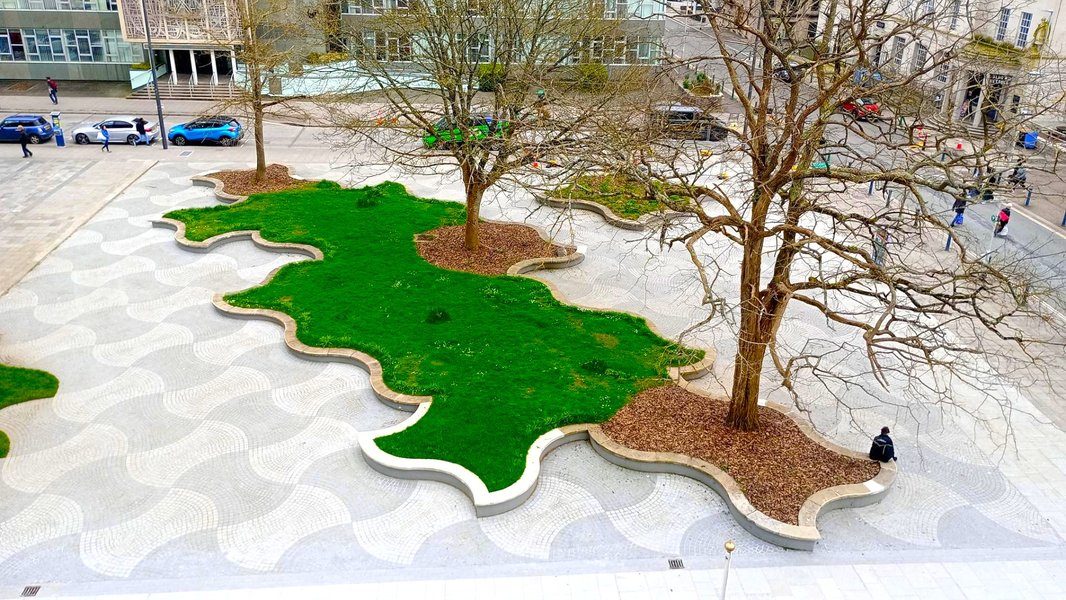
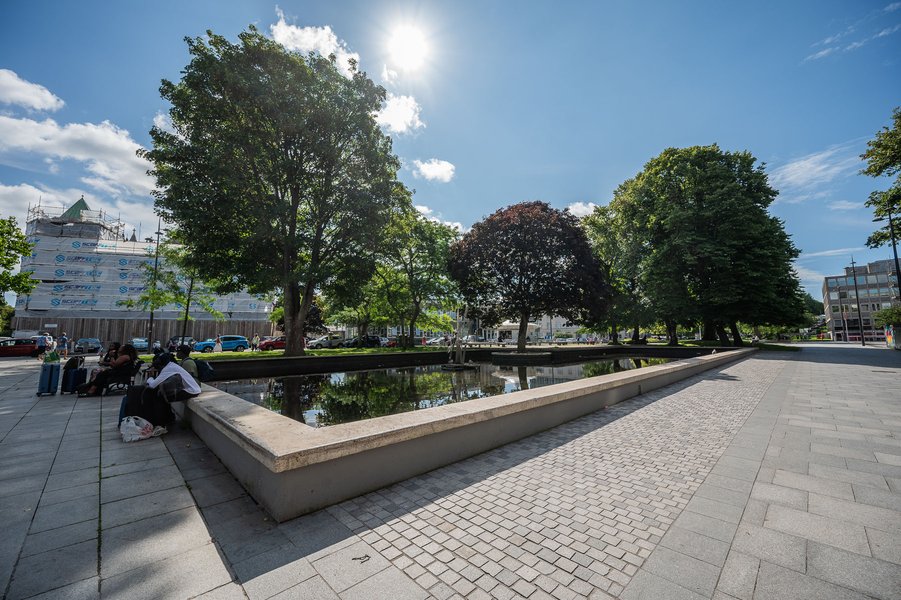
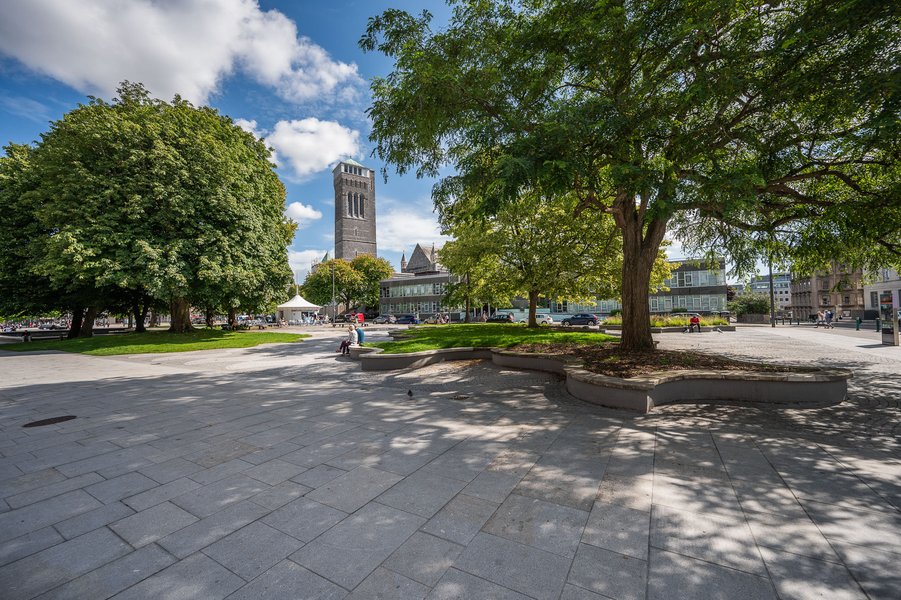
Improving city centre footfall
Serving as key routes into the Drake Circus Shopping Centre, Old Town Street and New George Street are two of the city’s busiest streets, with average footfall exceeding 200,000 visitors every week. Previously dominated by vehicle traffic and a central taxi rank, both streets have now been reimagined as pedestrian zones – enhancing safety, accessibility, and the overall experience for shoppers and visitors. Notably, improved sustainable travel accessibility contributed to a 56% increase in Healthy Streets health indicators, with a 92% assessment score demonstrating the tangible benefits of greener infrastructure on community wellbeing.
This phase of the works involved the removal of existing roadways and paving, followed by the installation of a new concrete sub-structure and a high-quality granite paving design. The area has been enhanced with newly constructed planting beds and rain gardens, accompanying granite and timber seating, general and event lighting, and upgraded CCTV coverage. The large interchange outside Drake Circus now also provides a space for pop-up events, with its striking granite sett pattern echoing the original paving design outside Guildhall.
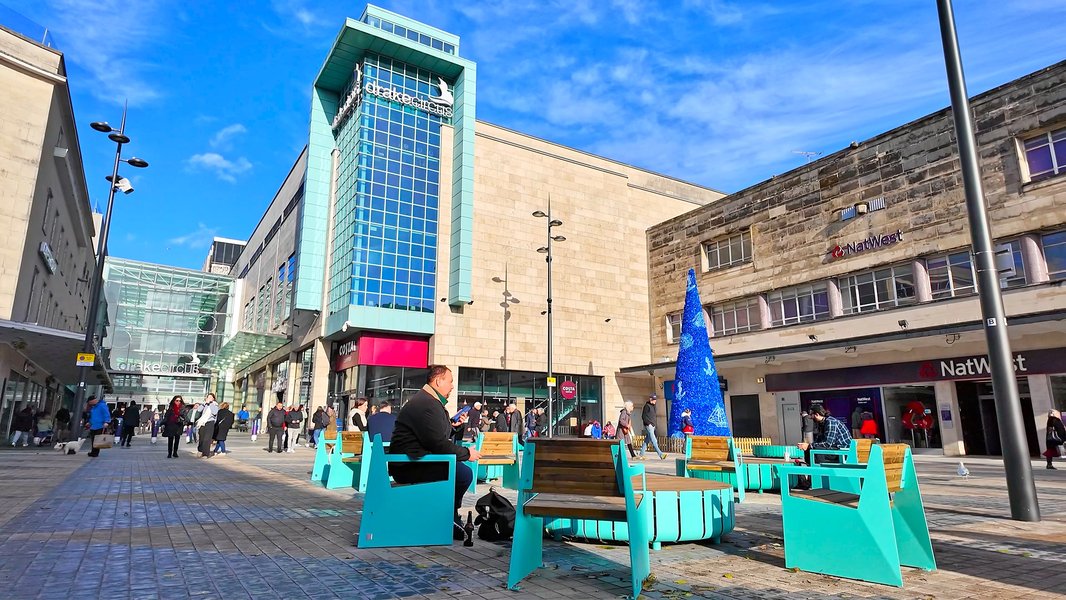
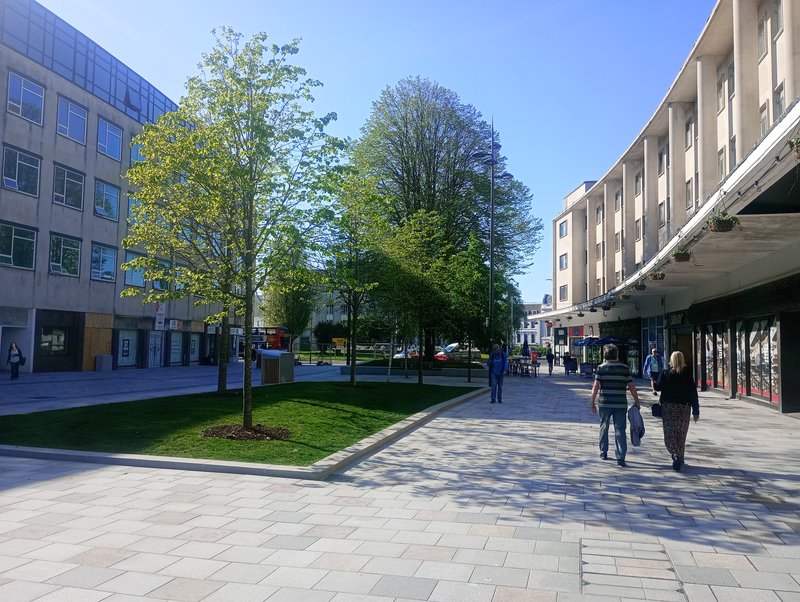
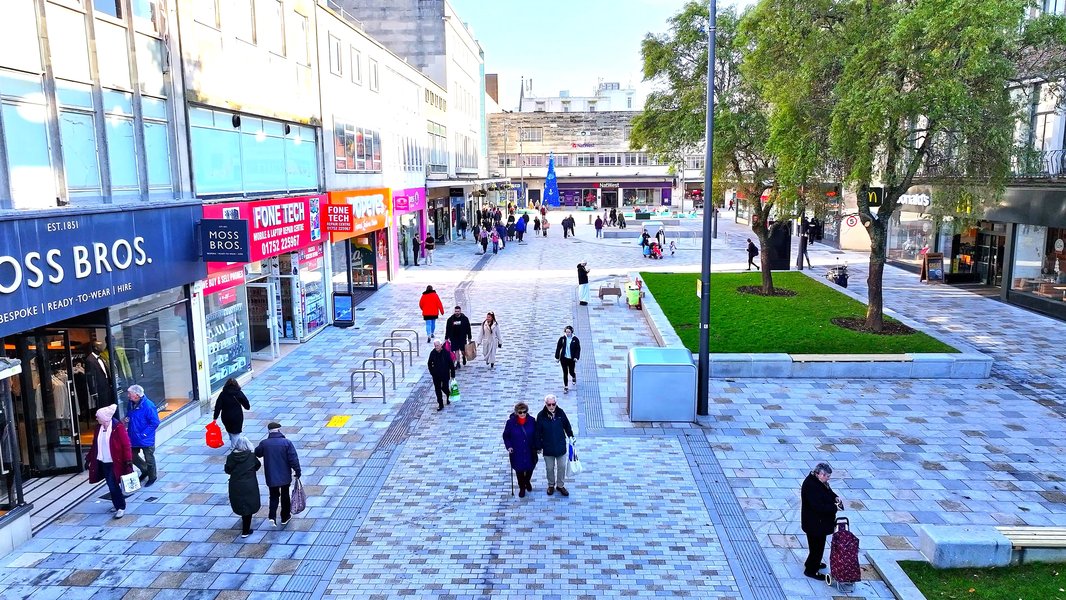
Digging into Plymouth’s Past
During WWII, Plymouth was one of the country’s most heavily bombed cities, with much of its city centre virtually razed to the ground during the conflict. Excavation of the existing roadways and paving revealed a complex record of the city’s buried past – including numerous voids, blitz rubble, filled-in cellars, remnants of old tram lines and a previously undetected Victorian culvert. These discoveries posed a series of challenges and prompted the need for specialist surveys, archaeological monitoring, and UXO watching briefs, with the project design carefully having to adapt to the city’s hidden historical features.
The project team also encountered a vast and intricate network of utility services beneath the surface – ranging from gas, electricity, water and telecoms, as well as many undocumented services dating back to the pre-war era. Extensive PAS128 underground utility detection surveys and vacuum excavation (VACEX) techniques were utilised to safely identify and manage them. Many services also required rerouting, and several had to be lowered due to their shallow depth – with some buried just 100mm below the surface. Through close coordination with providers such as BT, Virgin Media, and Wales & West Utilities, the team successfully completed the works without a single service strike.
Once complete, the installation of a new concrete sub-structure and granite paving required careful planning. Operating within a busy, live environment, the team developed bespoke solutions to integrate services, manhole chambers, and in-situ concrete slabs. To maintain uninterrupted shop access during trading hours, a custom pre-cast shopfront slab system was designed in collaboration with our supply chain partner, LARC Construction. In total, nearly 90 individually designed and cast slabs were installed overnight across several weeks, minimising disruption and overcoming the logistical challenges posed by high daytime footfall. The approach proved highly effective, with the works delivered smoothly and with minimal impact on surrounding businesses and the public.
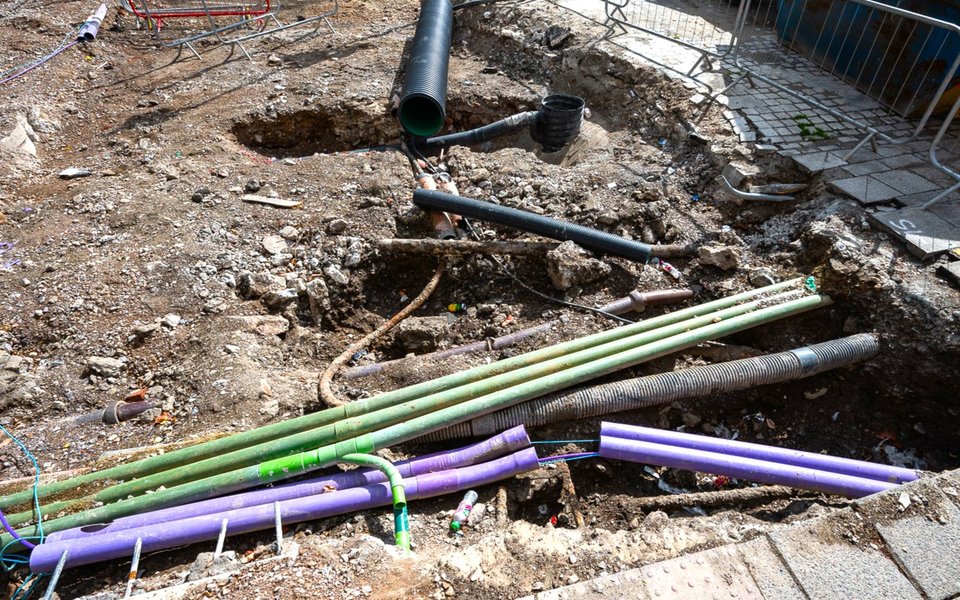
Sustainable Drainage and Biodiversity
As well as revitalising Plymouth’s city centre, this scheme has significantly enhanced the flood resilience of the city centre through the introduction of a Sustainable Urban Drainage system (SuDS). Three newly installed rain gardens, with a combined capacity of 75.5 cubic metres, are able to capture and temporarily store rainwater, with any excess diverted into a purpose-built storm sewer capable of holding an additional 215 cub metres. This system supports Plymouth’s Flood Management Strategy and Climate Emergency Action Plan by gradually releasing water via a controlled outfall hydrobrake – reducing pressure on the existing sewer network and cutting runoff into Plymouth Sound by up to 78%.
In addition to supporting flood resilience, the rain gardens play a vital role in boosting urban biodiversity by providing a sustainable water source for the newly installed planting beds, wildflower zones and grass gardens. Twenty-five semi-mature trees – specifically bred to thrive in city environments – join four retained mature specimens to create a greener, more welcoming setting for local residents and visitors. They have also been carefully selected to allow more natural light into nearby shops and second-storey offices, while also improving visibility at night – helping to address previous concerns around safety and antisocial behaviour linked to the dense, low-hanging canopies of the former trees. The diverse planting also helps guard against invasive pests and supports pollinators and local wildlife.
Local Impact and Engagement
Delivered through the SCAPE Construction framework, the project placed a strong emphasis on reinvesting in the local area, with more than £5.5m in social value generated during the project. This was achieved, in part, by ensuring 82% of labour and 68% of project spend was within a 20-mile radius of Plymouth, and by engaging 86% SMEs. The project also created meaningful work opportunities for local people, including 38 apprentice weeks and 13 work placement weeks for students and adults.
Recognising the importance of clear and consistent communication on a city centre project with wide-reaching impact, a dedicated Public Liaison Officer (PLO) was appointed to serve as a direct link between the project team and local businesses. To further support public engagement, a Knowledge Quad was also installed on site to provide a welcoming space for residents and business owners to drop in and ask questions, view plans, and stay informed about the latest developments.
Celebrating Success Together
Councillor Mark Lowry, Plymouth City Council Cabinet Member responsible for city centre works, said: "The overall works are truly impressive and have made a significant impact on our city centre, breathing new life into what was once a dated area. The new greenery, trees, and ornamental planting have created a vibrant and welcoming space for shoppers, visitors and businesses. With the local business community already making use of the space for their events and activities. I look forward to seeing even more in the future.”
City Centre Company Chief Executive Steve Hughes said: “This new public area is modern, spacious and attractive and footfall is bucking the national trend. It is a great space and we can’t wait to fill it with events and happenings that will keep people coming back again and again. “It’s been a roller coaster but the investment in this key city centre street is already bringing in new businesses.”
Cllr Tudor Evans, Leader of Plymouth City Council, said: “The project had its challenges. There’s been some incredibly tricky issues along the way that all had to be tackled and solved, numerous voids in the ground, Blitz rubble, filled-in cellars, a Victorian culvert, as well as the maze of utilities. The design team have been back to the drawing board a number of times to adapt plans to the conditions.”
Martin Ivatt, Regeneration and Placemaking Manager at Plymouth City Council, said: “Our overall working relationship with the team has been brilliant. The team have supported both client team and contract admin through a very challenging project. Through collaboration on site and a flexible working ethic to problem solving the project was handed over two weeks early, smoothly, professionally and snag free.”
Mark Robinson, Group Chief Executive at SCAPE, said: “SCAPE and Morgan Sindall have a strong track record of collaboratively delivering impactful regeneration projects in Plymouth city centre, including recently, the transformational improvements to Old Town Street and New George Street. The Armada Way and Royal Parade schemes are also exciting initiatives that will bring lasting benefits to the local community. Through our Gold Standard-verified Construction Framework, we support Morgan Sindall and the Council through accelerating project delivery while maintaining cost and time certainty, ensuring real value for our clients.”

Related News
NEWS
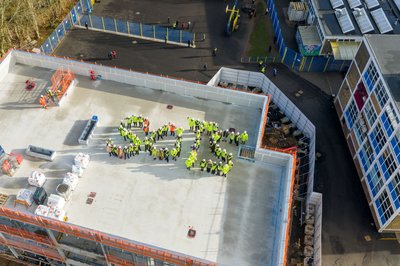
Morgan Sindall Marks Steel Signing Milestone at Selly Oak SEN School
Morgan Sindall Construction has marked a significant milestone in the delivery of Selly Oak SEN School with a steel signing ceremony, celebrating the completion of the building's structural frame.
NEWS
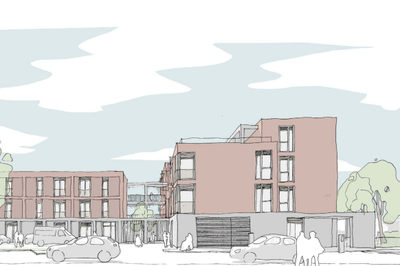
Morgan Sindall celebrates topping out at Hexham Road care and residential scheme
Morgan Sindall Construction’s Thames Valley business has marked a major milestone in the development of the £21.9 million Hexham Road residential and adult care facility, celebrating the project’s topping …
NEWS
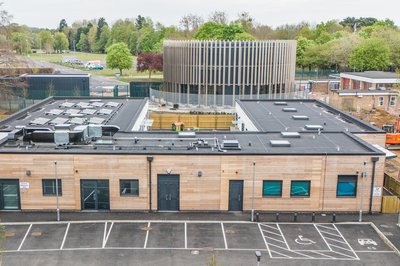
Stellar New Nursery at UKAEA’s Culham Science Campus
Morgan Sindall Construction’s Thames Valley team has successfully handed over Culham Science Centre Nursery & Preschool, a purpose-built early years facility located on the site of the UK …


